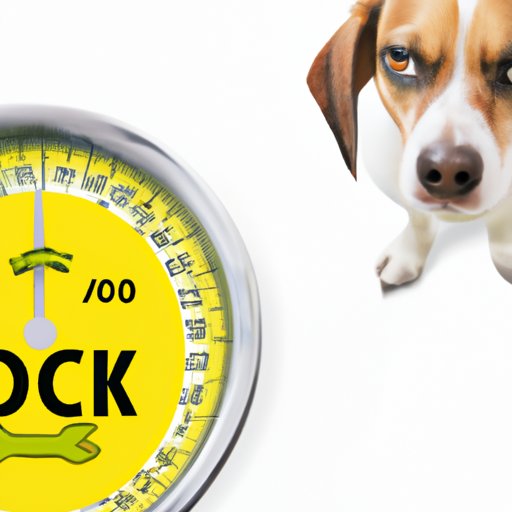
I. Introduction
Overweight and obese dogs are becoming increasingly common, but the solution doesn’t have to be complicated or overwhelming. By following a few simple strategies to promote weight loss, you can help your furry friend achieve and maintain a healthy weight, which can lead to a longer lifespan, improved mobility, and fewer health concerns.
II. Benefits of Maintaining a Healthy Weight and the Risks Associated With Obesity
Maintaining a healthy weight has numerous benefits for dogs, including improved quality of life, reduced risk of injury, and enhanced overall health. In contrast, obesity can lead to a host of health problems, including diabetes, heart disease, joint problems, and decreased life expectancy.
III. Tips for Calculating a Dog’s Ideal Weight and Developing a Weight Loss Plan
Before embarking on a weight loss plan for your dog, it’s important to calculate their ideal body weight and develop a safe and effective plan tailored to their unique needs. This may involve reducing calorie consumption, increasing physical activity, and monitoring progress along the way.
IV. Selecting Nutritious and Low-Calorie Foods for a Dog’s Diet
Choosing the right foods for your dog is key to helping them lose weight in a healthy way. This may involve selecting high-quality, nutritious foods that are low in calories and fat, as well as avoiding commercial dog treats that are high in sugar and other unwanted ingredients.
V. Encouraging Exercise, Playtime, and Physical Activity
Regular exercise and physical activity are essential components of any weight loss plan for dogs. This may include brisk walks, runs, and games like fetch or tug-of-war that promote movement and engagement.
VI. Portion Control and Ways to Keep Track of a Dog’s Food Intake
To ensure that your dog is consuming appropriate amounts of food, it’s important to establish portion control and measure their food intake accurately. This may involve using a food scale or measuring cup to determine the appropriate portion size and frequency of meals.
VII. Limiting Treats and Choosing Healthy Alternatives
While treats can be an enjoyable part of a dog’s diet, they can also add up quickly in terms of calories and fat. To prevent overconsumption of treats and promote weight loss, try offering healthy alternatives that are low in calories and fat, such as carrots or green beans.
VIII. The Importance of Patience, Consistency, and Positive Reinforcement
Weight loss for dogs, as with humans, is often a slow and gradual process that requires patience, consistency, and positive reinforcement along the way. By offering praise and encouragement for progress, you can help your dog stay motivated and on track towards their weight loss goals.
IX. Conclusion
By implementing the tips and strategies outlined in this article, you can help your dog achieve and maintain a healthy weight that promotes overall health and well-being. While the process may take time and effort, the rewards in terms of increased vitality and happiness are well worth it in the end.





